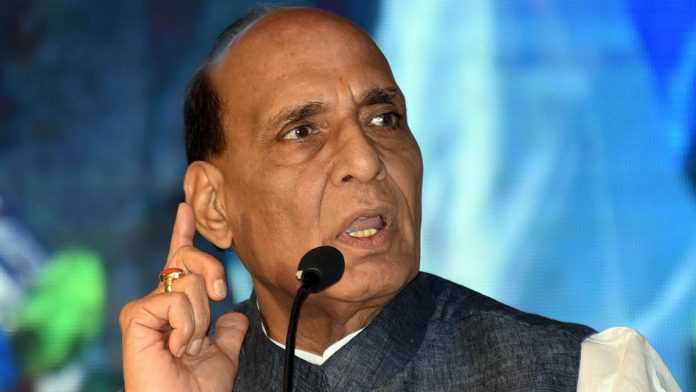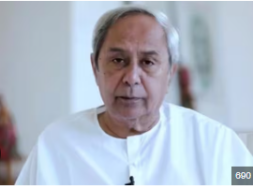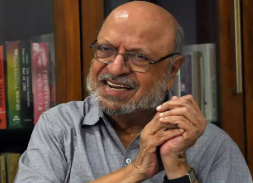
NEW DELHI, Sep 15: Defence minister Rajnath Singh has expressed the confidence that the agreement reached between the foreign ministers of India and China in Moscow on September 10 “if implemented sincerely and faithfully by the Chinese side” could lead to complete disengagement and restoration of peace and tranquility in the border areas.
Making a statement in the Lok Sabha on the situation on the India-China border on Tuesday, Singh squarely blamed China for the current situation on the border pointing out that time and again that country had tried to unilaterally change the status quo on the border violating the 1993 and 1996 agreements between the two countries for maintaining the undefined Line of Actual Control.
He said on several occasions India made it clear to the Chinese side both through diplomatic and military channels that China was categorically conveyed that its actions attempting to unilaterally alter the status quo was “unacceptable.”
Highly appreciating the valour and determination of the Indian armed forces to protect the integrity of the nation at all odds, Singh said the government emphasized that Indian was committed to resolve all the current issues on the border through peaceful dialogue and consultations and expect the Chinese side to reciprocate in the same manner. It was in pursuit of these objectives that he had met his Chinese counterpart in Moscow on September 6 and the external affairs ministers of the two countries at the same venue four days later. He said he had an “in-depth discussion” with his Chinese counterpart and “conveyed in clear terms our concerns related to the actions of the Chinese side, including amassing of large number of troops, their aggressive behavior and attempts to unilaterally alter the status quo that were in violation of the bilateral agreements. I also made it clear that even as we wanted to peacefully resolve the issue and would like the Chinese side to work with us, there should also be no doubt about our determination to protect India’s sovereignty and territorial integrity,” he added.
Singh said the root cause of repeated skirmishes on the India-China border was the undefined LAC and different perception held by China on the issue and disregard the LAC held by India. “We believe that this alignment is based on well-established geographical principles confirmed by treaties and agreements, as well as historical usage and practice, well-known for centuries to both sides. The Chinese position, however, is that the boundary between the two countries has not been formally delimited, that there exists a traditional customary line formed by the extent of jurisdiction that they claim was exercised historically by each side, and that the two sides have different interpretations of the position of the traditional customary line. The two countries had engaged in discussions during 1950s-60s but these efforts could not yield a mutually acceptable solution,” he pointed out.
Following is the full text of Rajnath Singh’s Statement:
“Hon’ble Speaker,
- I rise today to brief this august House about the development on our eastern borders in Ladakh. You are aware that our Hon’ble Prime Minister Shri Narendra Modi ji had visited Ladakh and met our brave soldiers to convey the message of solidarity of the Nation behind their every action. I too have spent some time with our soldiers in Ladakh and I want to tell you that I have felt their indomitable courage, gallant and valor. As you are aware that Col Santosh Babu, along with his 19 brave soldiers, made the supreme sacrifice in the cause of defending the territorial integrity of India. Hon’ble Speaker, this House has paid homage to them by observing two minutes silence yesterday.
- I would like to take some time first to briefly provide some details of our boundary issue with China. As the House is aware, India and China are yet to resolve their boundary question. China does not accept the customary and traditional alignment of the boundary between India and China. We believe that this alignment is based on well-established geographical principles confirmed by treaties and agreements, as well as historical usage and practice, well-known for centuries to both sides. The Chinese position, however, is that the boundary between the two countries has not been formally delimited, that there exists a traditional customary line formed by the extent of jurisdiction that they claim was exercised historically by each side, and that the two sides have different interpretations of the position of the traditional customary line. The two countries had engaged in discussions during 1950s-60s but these efforts could not yield a mutually acceptable solution.
- As the House is aware, China continues to be in illegal occupation of approximately 38,000 sq. kms in the Union Territory of Ladakh. In addition, under the so-called Sino-Pakistan ‘Boundary Agreement’ of 1963, Pakistan illegally ceded 5,180 sq. km. of Indian territory in Pakistan Occupied Kashmir to China. China also claims approximately 90,000 sq. kms. of Indian territory in the Eastern Sector of the India-China boundary in Arunachal Pradesh.
- Both India and China have formally agreed that the boundary question is a complex issue which requires patience and have committed to seeking a fair, reasonable and mutually acceptable solution through dialogue and peaceful negotiations. In the interim, the two sides also agree that maintenance of peace and tranquility in the border areas is an essential basis for the further development of bilateral relations.
- I would like to mention here that as yet there is no commonly delineated Line of Actual Control (LAC) in the border areas between India and China and there is no common perception of the entire LAC. Therefore, in order to ensure peace and tranquility in the border areas, especially along the Line of Actual Control (LAC), the two countries have concluded a number of agreements and protocols.
- Under these agreements, the two sides have agreed to maintain peace and tranquility along the LAC without prejudice to their respective positions on the alignment of the LAC as well as on the boundary question. It is on this basis, that our overall relations also saw considerable progress since 1988. India’s position is that while bilateral relations can continue to develop in parallel with discussions on resolving the boundary question, any serious disturbance in peace and tranquility along the LAC in the border areas is bound to have implications for the positive direction of our ties.
- A key element of both the 1993 and the 1996 Agreements is that the two sides will keep their military forces in the areas along the Line of Actual Control to a minimum level. These agreements also mandate that pending an ultimate solution to the boundary question, the two sides shall strictly respect and observe the Line of Actual Control. Furthermore in these agreements, India and China also committed to clarification and confirmation of the Line of Actual Control to reach a common understanding of the alignment. Thus, in late 1990s and up to 2003, the two sides engaged in an exercise to clarify and confirm the LAC. But, thereafter the Chinese side did not show a willingness to pursue the LAC clarification exercise. As a result, there are some areas where the Chinese and Indian perceptions of LAC overlap. In these areas, as also with other sections of the border areas, the various agreements govern the manner in which troops of both sides should operate and deal with situations of face-offs to maintain peace and tranquility.
- Before I apprise the House of the current developments, let me inform that the Government has an elaborate and time tested coordination mechanism amongst different intelligence agencies including intelligence units of the Central Police Forces and the three armed forces. The technical and human intelligence is continuously gathered in a well-coordinated manner. It is shared with the armed forces which help them in taking decisions.
- Let me now apprise the House of the developments this year. Since April, we had noticed a buildup of troops and armaments by the Chinese side in the border areas adjacent to Eastern Ladakh. In early May, the Chinese side had taken action to hinder the normal, traditional patrolling pattern of our troops in the Galwan Valley area, which resulted in a face-off. Even as this situation was being addressed by the Ground Commanders as per the provisions of our bilateral agreements and protocol, in mid-May the Chinese side made several attempts to transgress the LAC in other parts of the Western Sector. This included Kongka La, Gogra and North Bank of Pangong Lake. These attempts were detected early and consequently responded to appropriately by our armed forces.
- We made it clear to the Chinese side both through diplomatic and military channels that China was, by such actions attempting to unilaterally alter the status quo. It was categorically conveyed that this was unacceptable.
- Given the growing friction along the LAC, the Senior Commanders of the two sides in a meeting on June 6, 2020 agreed on a process of disengagement that involved reciprocal actions. Both sides also agreed to respect and abide by the LAC and not undertake any activity to alter the status quo. However in violation of this the Chinese side created a violent face off on June 15th at Galwan. Our brave soldiers laid down their lives and also inflicted costs including casualties on the Chinese side,
- The conduct of our armed forces throughout these incidents shows that while they maintained “Sayyam” in the face of provocative actions, they also equally displayed “Shaurya” when required to protect the territorial integrity of India. I would like the House to join me in recognizing the courage and valour of our soldiers, who undergo immense hardship in the most difficult conditions to keep us all safe and secure.
- While no one should doubt our determination to safeguard our borders, India believes that mutual respect and mutual sensitivity are the basis for peaceful relations with neighbours. As we want to resolve the current situation through dialogue, we have maintained diplomatic and military engagement with the Chinese side. In these discussions, we have maintained the three key principles that, determine our approach: (i) both sides should strictly respect and observe the LAC; (ii) neither side should attempt to alter the status quo unilaterally; and (iii) all agreements and understandings between the two sides much be fully abided by in their entirety. The Chinese side on its part, took the position that the situation should be handled in a responsible manner and ensure peace and tranquility as per bilateral agreements and protocol.
- Even as these discussions were going on, the Chinese side again engaged in provocative military manoeuvres on the night of 29th and 30th August in an attempt to change the status quo in the South Bank area of Pangong Lake. But yet again, timely and firm actions by our armed forces along the LAC prevented such attempts from succeeding.
- As is clear from these events, the Chinese actions reflect a disregard of our various bilateral agreements. The amassing of the troops by China goes against the 1993 and 1996 Agreements. Respecting and strictly observing the Line of Actual Control is the basis for peace and tranquility in the border areas and explicitly recognized in both 1993 and 1996 agreements. While our armed forces abide scrupulously by it, this has not been reciprocated by the Chinese side. Their actions have led to face-offs and frictions from time to time along the LAC. As I mentioned earlier, the agreements have detailed procedures and norms to deal with the situation of face-offs. However, in the recent incidents, this year, the violent conduct of Chinese forces has been in complete violation of all mutually agreed norms.
- As of now, the Chinese side has mobilized a large number of troops and armaments along the LAC as well as in the depth areas. There are several friction areas in Eastern Ladakh including Gogra, Kongka La and North and South Banks of the Pangong Lake. In response to China’s actions, our armed forces have also made appropriate counter deployments in these areas to ensure that India’s security interests are fully protected. The House should have full confidence that our armed forces will always rise to the challenge and do us all proud. This is still an ongoing situation and obviously involves sensitive operational issues. I would, therefore, not be able to give more details in public and I am confident about the understanding of the House in this regard.
- This rapid deployment by our armed forces including ITBP has taken place in a challenging time of COVID-19. Their efforts need to be appreciated. It has also been made possible by the high importance that the Government has placed for developing border infrastructure in the last few years. The House is aware that over the last many decades, China had undertaken significant infrastructure construction activity that enhanced their deployment capabilities in the border areas. However, in response, our Government too has stepped up the budget for border infrastructure development to about double the previous levels. As a result, more roads and bridges have been completed in the border areas. This has not only provided much needed connectivity to the local population, but has also provided better logistical support for our armed forces, enabling them to be more alert in the border areas and respond more effectively where required. In the coming years too, the Government remains committed to this objective.
Hon’ble Speaker,
- I would like to emphasize, that India remains committed to resolving the current issues in our border areas through peaceful dialogue and consultations. It was in pursuit of this objective that I met my Chinese counterpart on 4th September in Moscow and had an in-depth discussion with him. I conveyed in clear terms our concerns related to the actions of the Chinese side, including amassing of large number of troops, their aggressive behavior and attempts to unilaterally alter the status quo that were in violation of the bilateral agreements. I also made it clear that even as we wanted to peacefully resolve the issue and would like the Chinese side to work with us, there should also be no doubt about our determination to protect India’s sovereignty and territorial integrity. My colleague, Shri Jai Shankar, the External Affairs Minister, has thereafter met the Chinese Foreign Minister in Moscow on 10th September. The two have reached an agreement that, if implemented sincerely and faithfully by the Chinese side, could lead to complete disengagement and restoration of peace and tranquility in the border areas.
- As the Members are aware, in the past too we have had situations of prolonged stand-offs in our border areas with China which have been resolved peacefully. Even though the situation this year is very different both in terms of scale of troops involved and the number of friction points, we do remain committed to the peaceful resolution of the current situation. At the same time, the House can be assured that we remain prepared to deal with all contingencies.
- Hon’ble Speaker this House has had a glorious tradition that whenever the country is faced with a challenge, this House has always exhibited its strength and unity towards the resolve and determination of our Armed Forces. This House has also reposed its full confidence in the indomitable spirit, gallantry and bravery of our Armed Forces deployed on our borders.
- I can assure you that the morale and motivation of our Armed Forces is very high. The reassuring visit by our PM has ensured that our commanders and soldiers understand that the entire nation stands behind them in support of the just cause of defending our territorial integrity. They are accordingly being provisioned with suitable clothing, habitat and the required defence wherewithal. The determination of our troops is praise worthy. They are capable of serving at forbidding altitudes with scarce oxygen and in extremely cold temperatures, something that they have effortlessly done over the last many years on Siachen, and Kargil.
- I will not hesitate to share with this august House that we are facing a challenge in Ladakh and I urge the House to pass a resolution in support of our Armed Forces who have been defending our motherland at great heights and most inclement weather conditions in Ladakh for our safety and security. This is a time when this august House has to come together and reiterate confidence and faith in the velour of the brave armed forces and support them in the mission that they have undertaken to protect the territorial integrity of our motherland.
Jai Hind.”
(Manas Dasgupta)













